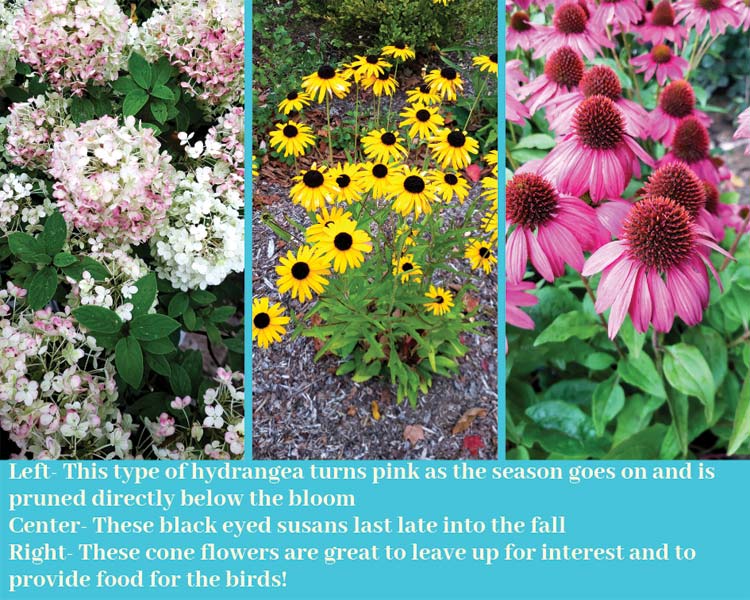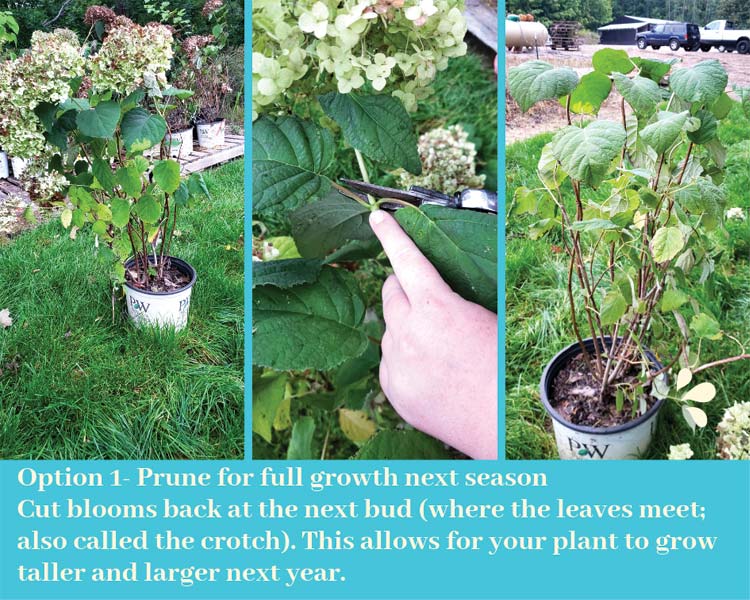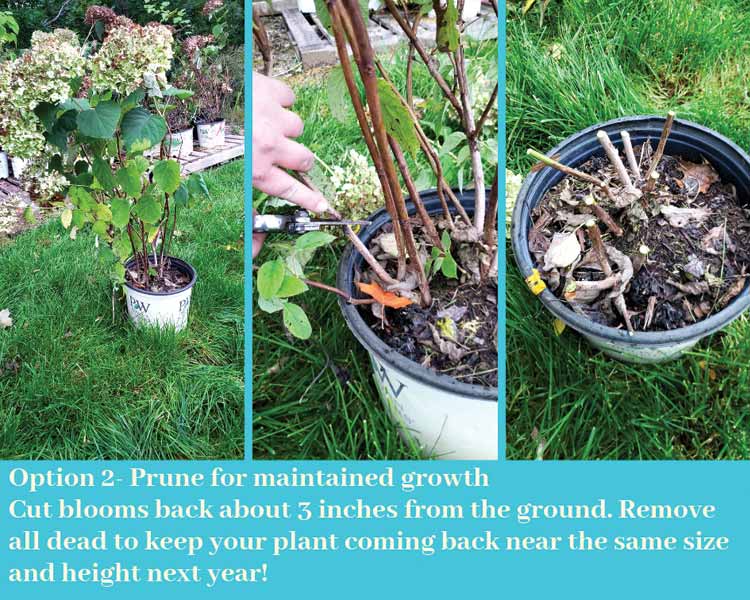When assessing your yard, which plants need to be cut back (cut to the ground) and which need to stay? And why? Opinions vary from area to area and even between horticulture experts. There are some plants that we all agree on, but others pruning techniques and timing can vary. Depending on the type of plant and your goal for that plant in the coming years, pruning rules can flex and bend to meet your need. Let’s look at a few pruning tips from the experts.
When should I cut back and why?
Any herbaceous plants (perennials) can be cut back in the fall or in the spring. We prefer fall because often if you wait until the spring the plant gets unsightly and mushy over the winter. The other plus to cutting back in the fall is it prevents cutting any new growth in the Spring. If you wait until Spring to cut back your perennials, and then don’t do it right away, oftentimes you’ll actually end up cutting off new growth when you cut back the old growth. To learn more about timing of cutbacks, check out this blog on pruning.
What should I cut back and why?
Nearly any plant that dies to the ground every year, perennials, herbaceous, whatever you choose to call them, can be cut back in the late fall and it will not hurt them; even if they’re still a little green. If you do cut a plant back in the fall, it is OK to leave about 3” or so above the ground. The only plants we would recommend not cutting back in the fall would be tall plants (grasses mainly) that you’d leave up for winter interest, although this is completely the homeowners’ preference. We usually cut the grasses down in the fall because although they give you something to look at in the first part of winter, by the end we’ve gotten so much snow that the grasses are broken and then difficult to cut back and just messy. If you cut grasses back in the fall, you can tie a rope around them and then cut them down tied up, making clean up easier.
Some plants (bulb plants like Asiatic Daylilies) only get cut back halfway to the plant as the plant sucks the nutrients back into the bulb from the stalk over winter. Trees tend to follow a different rule and we recommend you consult a professional as avoiding oak wilt and other disease is extremely important.
Selecting a Company to Help you Maintain Plantings
Ambitious people might want to save as much pretty in their landscape as they can; so, to do that you just cut plants back as they die out. Some plants look bad earlier–like daylilies, their leaves will turn yellow, so you can cut those back right away. Others, like grasses and Black Eyed Susans, will stay green longer. A benefit of cutting back in the spring? The foliage, although unpleasant after winter, does offer winter protection if you are located in a harsh environment. To learn more about how to cut back, check out this blog on pruning.
All of this maintenance to plantings can get a bit overwhelming. In the “After Phase” of our learning center, we have a common plant care guide you can download for free if you plan to maintain your plantings yourself. TruNorth Landscaping offers both residential and commercial planting maintenance.
Ready to get started with horticulture services in Grand Traverse or Leelanau County, MI? If so, meet with our team of experts, choose a solution to improve your property, and get ready to sit back, relax, and enjoy your beautiful outdoor space.
Get started today with a consultation!
Want tips and tricks for your lawn & landscaping?
Sign Up For Our Free Quarterly Newsletter
We take your personal information very seriously. We will not share any of the information you provide with any 3rd parties. Provided information will be used specifically to contact you in regards to your inquiry.




